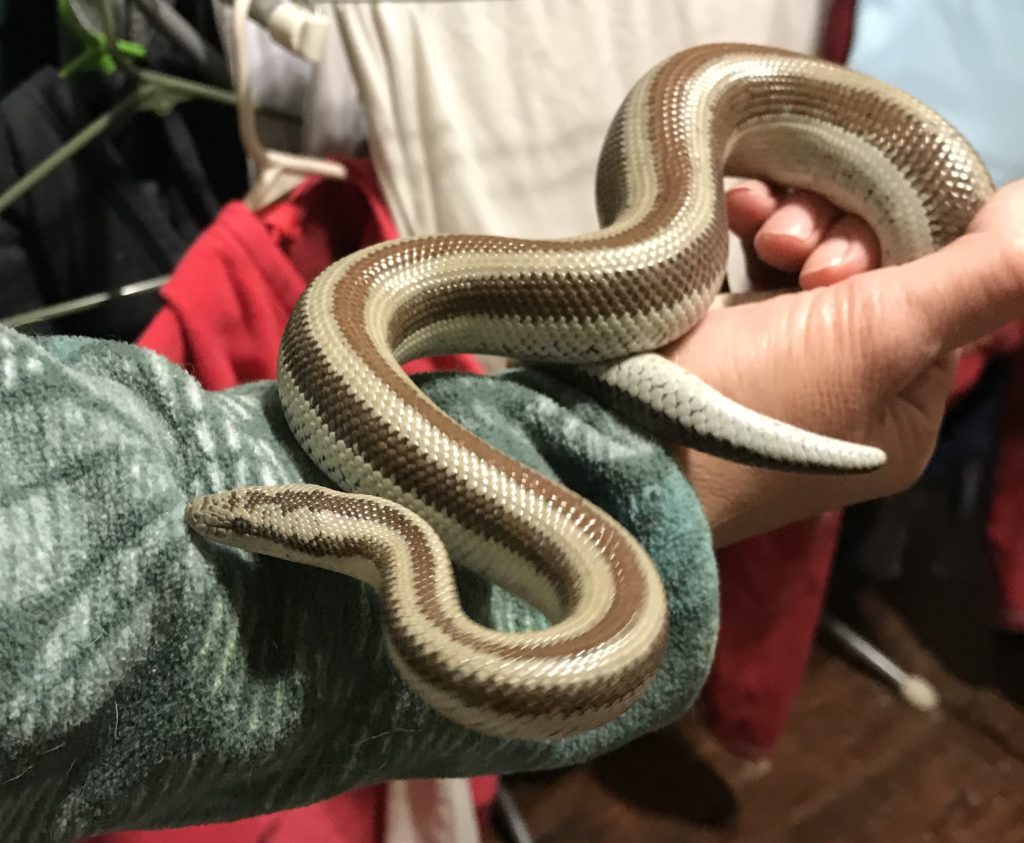
Charina trivirgata
One of only two boas native to the United States, the Rosy boa can be found in Southwest America and Baja California, as well as in parts of Mexico. These guys are usually quite small, for the realm of boas, reaching no longer than 4 ft in length and a diameter of about an inch and a half at the widest point.
They are called “Rosy” boas because of the pinkish coloration that is common on the undersides of boas from Baja, though animals from other locals don’t have this coloration. The species name trivirgata, refers to the fact that most individuals have at least a trace of three stripes running down the snake from head to tail.
Rosy boas tend to come from very dry, harsh environments and spend most of their time hiding under rocks, in crevices or outcroppings of granite, very rarely being found where there aren’t rocks to use for cover. In these few locations, the animals will steal the burrows of rodents to escape the heat and to hide from predators. During the winters in most of the Rosy’s range, the animal goes into a brumative (hibernation) state in these hiding areas awaiting spring when they come out to hunt, acquire territory and mate. Once summer comes around, these guys become relatively nocturnal, waiting for the heat of the day to subside before coming out of their dens.
Typically, Rosy boas hunt small mammals including, but not limited, to deer mice, baby rabbits and kangaroo rats, though it will eat anything that is small enough and gets close enough for a strike. Rosy boas are one of the slowest moving species of snake in the world and as such, it isn’t going to give chase to get its dinner. Typically, the prey needs to get within two or three inches for the rosy to capture it. They are also very docile snakes and typically will not bite even when disturbed. If scared it will roll into a compact ball similarly to the ball python and exude a very foul smelling musk from the tail.
How cool!!!! Another live bearer – like the other boa, they give birth to live young, rather than laying eggs. Typically Rosy’s give birth to six baby snakes that are about 12 inches in length and ready to go on the hunt. These guys haven’t gained the same popularity as the corn snakes, milk snakes, ball pythons, etc. but their following is slowly growing with the production of different color morphs (even albino).
Lets meet the Snake Haus Rosy boas! Follow the links below to go to their pages.
(under construction . . . more info coming soon)

